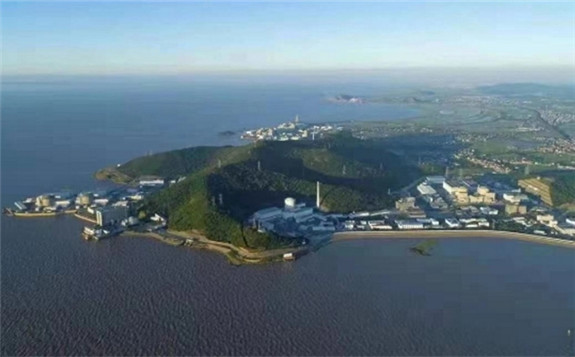China National Nuclear Corporation (CNNC) has launched a district heating demonstration project at the Qinshan nuclear power plant in Zhejiang Province. The project, in cooperation with the Haiyan County Government, will "provide a nuclear energy solution to solve the heating problem in southern China," the company said.

The demonstration project is divided into three phases, CNNC said. The first phase is planned to be completed and put into operation by the end of this year, providing nuclear energy generated central heating to 459,000 square metres of accommodation in three residential areas and 5000 square metres of apartments for the elderly in Haiyan County. The overall project goal is to have a nuclear heating area of 4 million square metres by 2025, covering the main urban area of Haiyan County and the entire area of Shupu Town.
"Nuclear energy heating technology has mature technical routes, broad market prospects and huge development potential," CNNC said. "As an important livelihood protection project in Haiyan County, the project will use the remaining thermal power from the Qinshan nuclear power plant units in winter to provide safe, zero-carbon heating for residents and public facilities in Haiyan County without affecting the original power generation and safety performance of the units."
The company noted the project will help Zhejiang province achieve its goal of carbon neutrality ahead of schedule and build a "zero-carbon energy, green development" national-level high-quality development demonstration zone.
Qinshan is China's largest nuclear power plant, comprising seven reactors. Phase I of the plant saw the construction of a 300 MWe pressurised water reactor (PWR) start in 1985 - the first indigenously-designed Chinese nuclear power station to be built. Qinshan Phase II is home to four operating CNP-600 PWRs, built with a high degree of localisation. Units 1 and 2, comprising the first stage of Phase II, began operating in 2002 and 2004, respectively. Units 3 and 4 entered commercial operation in October 2010 and April 2021, respectively. Phase III consists of two 750 MWe pressurized heavy water reactors supplied by Atomic Energy of Canada Ltd and commissioned in 2002 and 2003.
Move to clean heating
The Chinese government has made clean-energy heating a priority. In 2017, the authorities issued guidance on clean heating in winter in northern China. The National Energy Administration released a five-year plan, covering 2017-2021, highlighting the innovation of clean heating technology and consideration of nuclear heating.
In September 2018, CNNC announced the completion of the preliminary design of the 400 MWt Yanlong pool-type low-temperature reactor for district heating. The company launched its independently researched and developed Yanlong reactor (referred to as the DHR-400) for district heating in November 2017.
A feasibility study on constructing China's first nuclear plant for district heating began in early 2018 by China General Nuclear and Tsinghua University. The plant would use the domestically-developed NHR200-II low-temperature heating reactor technology.
China's Haiyang nuclear power plant in Shandong province officially started providing district heat to the surrounding area in November 2020. A trial of the project - the country's first commercial nuclear heating project - was carried out the previous winter, providing heat to 700,000 square metres of housing, including the plant's dormitory and some local residents. The Haiyang Nuclear Energy Heating Project is expected to provide heating to the entire Haiyang city by 2021.
The system used at Haiyang extracts non-radioactive steam from the secondary circuit of the plant's two AP1000 units, which is then fed through a multi-stage heat exchanger in an on-site heat exchange station. This heat is then fed to an off-site heat exchange station belonging to Fengyuan Thermal Power, from where heated water flows through municipal heating pipes to consumers.